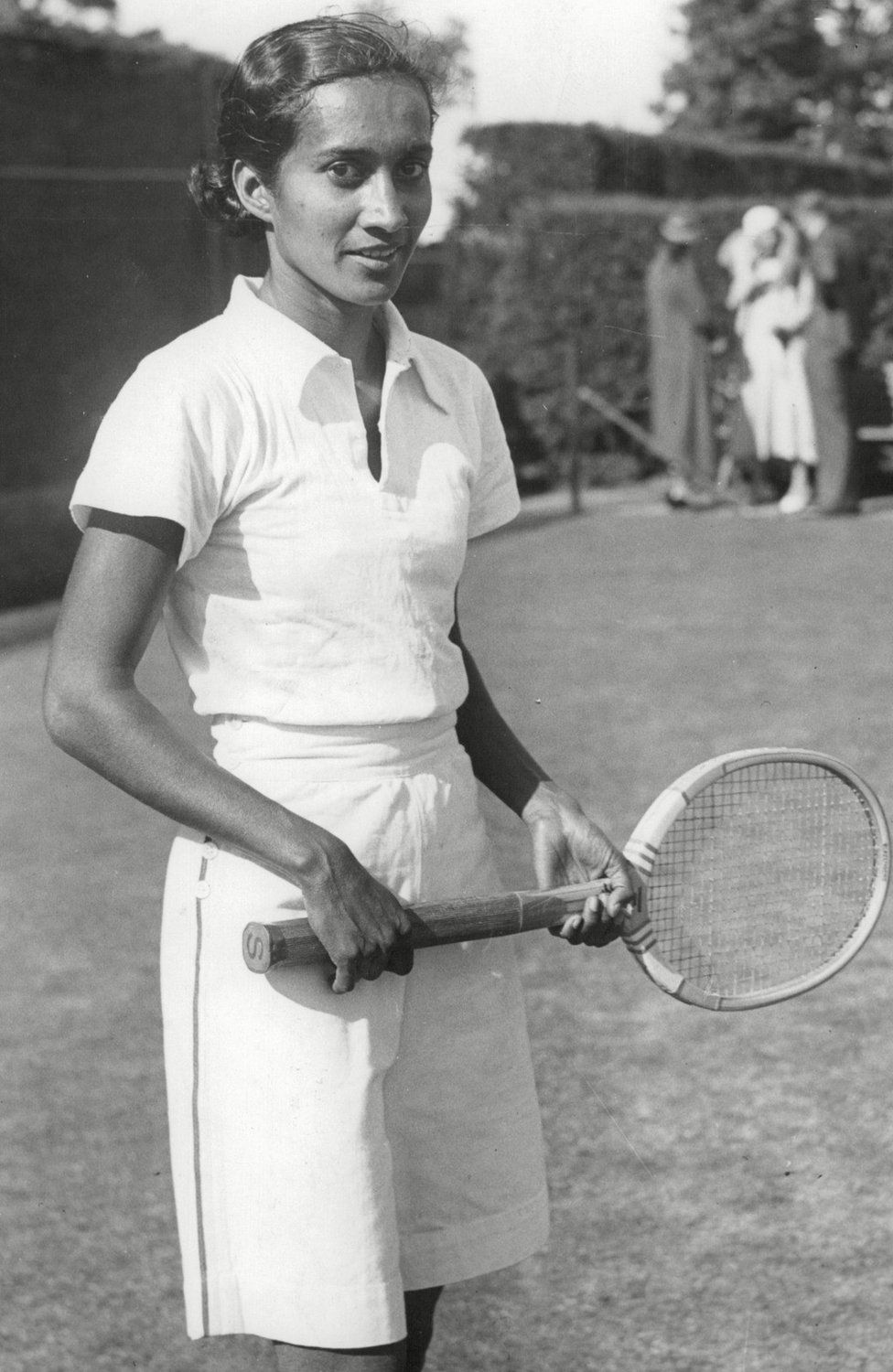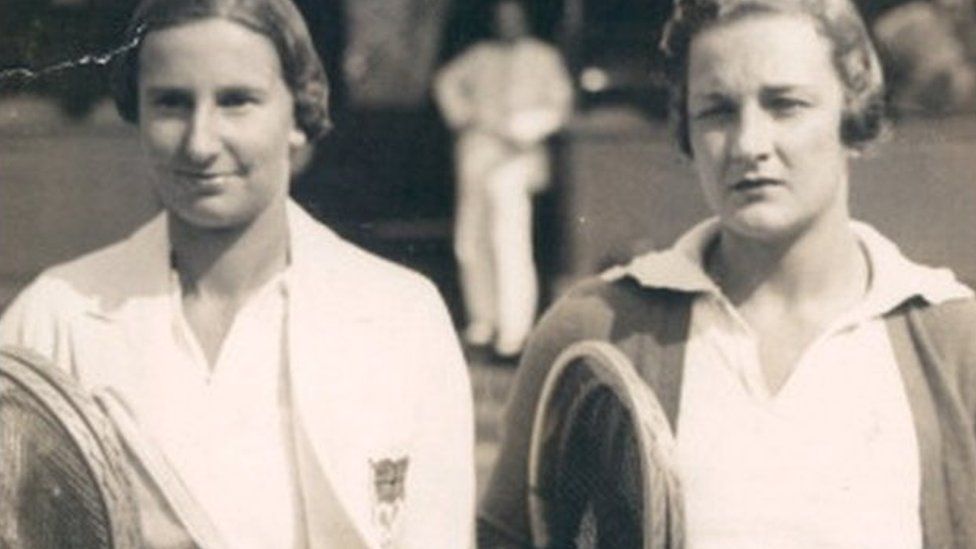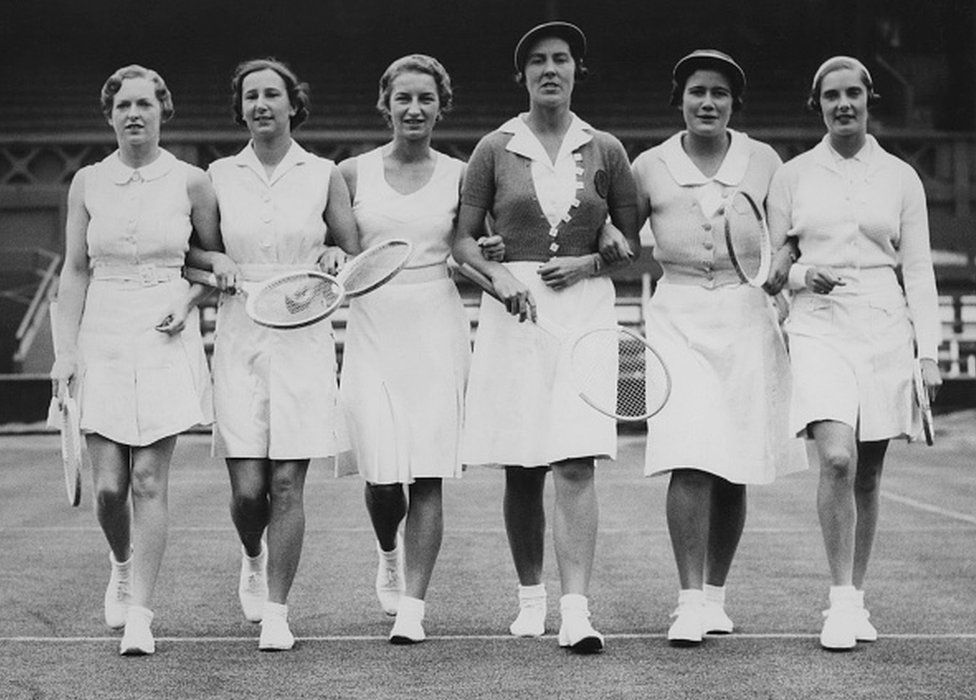
 Shutterstock
Shutterstock
A author, dancer, playwright, mountaineer and a nationwide tennis champion, Leela Row – the primary Indian girl to win a tennis match on the Wimbledon – was as prolific as they arrive.
In his 1966 guide My Contemporaries, artwork critic Govindraj Venkatachalam recollects assembly Row as a younger lady.
“Timid and nervous, she was shy of strangers,” he wrote. “Little did we realise then that this slip of a lady, would at an early age, grow to be an all-India determine and one of many world’s champion tennis gamers.”
Born in December 1911, Leela Row was the daughter of Raghavendra Row, a famend doctor, and Pandita Kshama Row, one of many foremost Sanskrit students of her time.
Row was raised in India and educated at dwelling by her mom. The household would go on to journey in England and France, the place Row additionally studied the humanities.
She started studying classical Indian dance on the age of three to enhance her bodily power after a bout of malaria.
Venkatachalam met Row by means of mutual buddies of their household and described her as “very versatile”. As a younger lady, she was educated in violin by a grasp in Paris and had a ardour for the stage.
It was from her mom that Row inherited her love for tennis.
European sports activities had gained reputation amongst Indian ladies as a part of a broader motion for emancipation, Boria Majumdar and JA Mangan write of their guide Sport in South Asian Society.
Within the Twenties, Kshama Row was among the many first few ladies tennis gamers within the nation – she gained the singles title on the Bombay Presidency Laborious Court docket Championships in 1927.
Row quickly adopted in her mom’s footsteps, dominating the tennis circuit within the nation as a singles participant whereas additionally enjoying doubles matches along with her mom.

In 1931, she gained her first title on the All India Championship. She went on to win six extra within the following years.
Via the Twenties and Thirties, Row steadily made information for successful matches at championships throughout the nation.
In 1934, she turned the primary Indian girl to win a match on the hallowed grounds of Wimbledon with a 4-6, 10-8, 6-2 victory over Gladys Southwell of Britain. She misplaced to France’s Ida Adamoff within the subsequent spherical.
Row was again on the match the subsequent 12 months however misplaced in straight units to Britain’s Evelyn Dearman within the first spherical.
It could be 71 years earlier than one other Indian girl – Sania Mirza – would compete within the senior girls’ draw on the Wimbledon.
- India tennis icon who confirmed hate might be defeated
“She lived the form of elite Indian life that would have solely taken place within the years between the 2 World Wars, when the best echelons of Indian society may concurrently preserve one foot firmly planted within the nation of their start, however one other simply as firmly, within the broader worldwide networks of the British empire,” author Sidin Vadukut wrote of her in 2018.
In 1943 , Row married Harishwar Dayal, a civil servant who had represented India on the UN and was then the deputy at India’s embassy in Washington DC.
Row continued to play exhibition tennis matches throughout her time within the US.
However by the late Nineteen Forties, she had turned to her different love – writing about and documenting artwork.

From her mom, who was thought of a pioneer of modernism in Sanskrit, Row had additionally inherited her love for the language. She tailored a number of Sanskrit poems written by her mom for the stage.
Whereas she was not an expert dancer, she wrote a number of books in English and Sanskrit on Indian classical dances.
Her guide Natya Chandrika delved into the artwork of Indian dance and drama, whereas one other one, titled Nritta Manjari delved into the dance sequences of Bharatanatyam.
Natya Chandrika was the primary guide by an Indian creator to be archived by the US Library of Congress, the LA Occasions reported in 1958.
She additionally wrote a guide on the origins and methods of the Manipuri dance type, which one reviewer referred to as “an enthralling introduction” to a “wealthy and diversified treasure of classical Indian dance”.
By the late Nineteen Fifties, she had spent 20 years researching Indian dance types and written 5 books on them. For a few of these, she’d posed for the illustrations to show the shape and motion.
“I wish to convey out in drawings what my ancestors did in sculpture within the temples of Southeast Asia,” she informed the Windsor Day by day Star.
In 1963, Row printed a kids’s guide she wrote by hand and certain herself. The guide informed the story of the mystic poet Meerabai and was based mostly on a Sanskrit poem written by her mom. Row illustrated the story with delicate line drawings in black.
A senior librarian at Singapore’s Nationwide Library referred to as it “probably the most treasured possessions within the Asian Youngsters’s Literature assortment”, which has among the oldest and rarest kids’s books from Asia.
- The tennis era that modified the world
Row and her husband have been “passionately keen on the excessive mountains,” she wrote in quantity 26 of the Himalayan journal. So the couple have been joyful when Dayal was posted as India’s ambassador to Nepal in 1963.
Throughout her time there, she’d write concerning the nation’s artwork and structure.
Row would usually go on treks to the mountains, typically along with her husband or alone.
“It was all the time some political disaster which prevented us making the journeys or returning sooner than anticipated,” she wrote.
On a trek within the Khumbu area of Mount Everest, Row writes of visiting the Thyangboche monastery – “the primary go to of an Indian girl” – and the pleasure of seeing Mount Everest every single day.
She referred to as trekking up the Taboche ridge “the largest thrill of my life”.
“My life’s dream has been fulfilled,” she wrote within the journal.
Dayal died in 1964 whereas the couple was on one other journey to the Khumbu area.
There’s little info on how and the place Row spent her final years and on her surviving relations.
She was final talked about The Occasions of India in 1975 when a chook sanctuary in France exhibited her work on Himalayan fauna.
Regardless of her extraordinary accomplishment, there’s little analysis on Row’s life, making her removed from a family identify in India.
BBC Information India is now on YouTube. Click on right here to subscribe and watch our documentaries, explainers and options.

Learn extra India tales from the BBC:
- The Indians taking over large Saudi-backed refinery
- At the least two useless after Cyclone Biparjoy hits India
- ‘Survivors took refuge in bushes – and died of starvation’
- The person on the centre of India’s large wrestling row
- Why has India stopped successful high cricket trophies?

Associated Matters
- Asia
- India
Adblock take a look at (Why?)